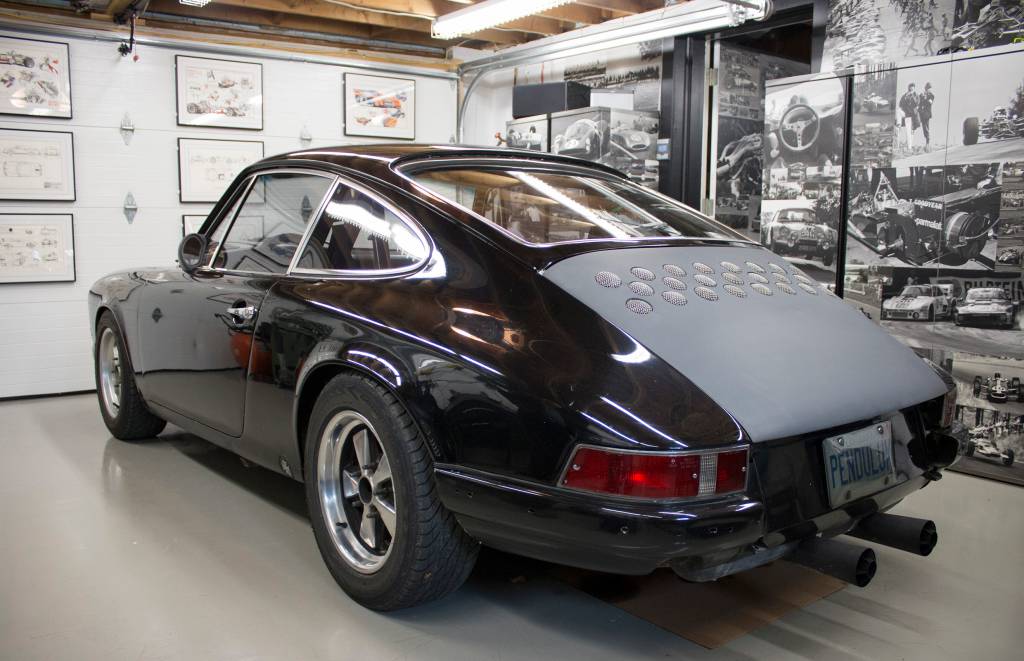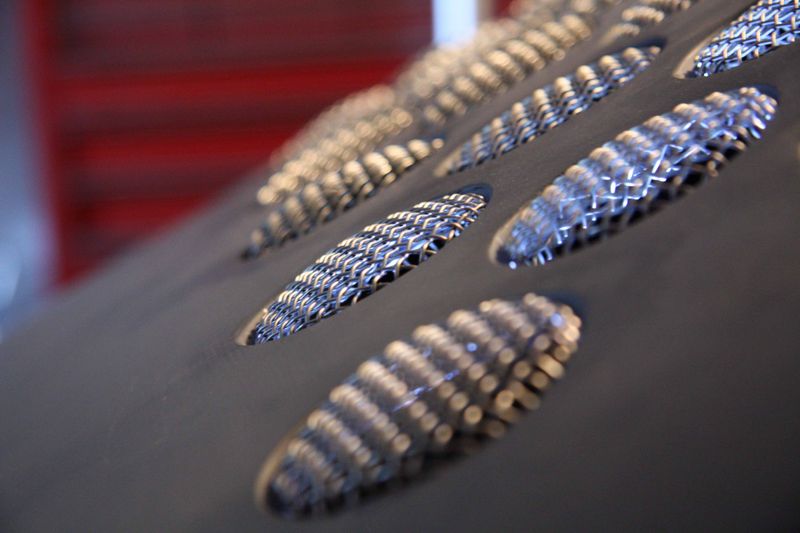PENDULUM OUTLAW
PORSCHE 911 PROJECT
Why a 911?
I’m not sure if it was by accident or design that I ended up with a 911 but, looking back, it seems like there was a certain inevitability to my choice. One of the earliest toys I remember having as a child was a Porsche 904 Corgi toy. I grew up with VW Beetles; in the late 50s and early 60s, my grandfather had two Beetles as company cars. Later, I had one for college. No heat, ice scraper permanently stuck in the defrost vent for scraping the frost off the inside of the windshield, plenty of fresh air from the rust-perforated floor. The most important accessory was the pile of blankets in the back seat to keep warm.
After college I started racing Formula Fords and Formula Vees with some success. During the winter off-season, I explored the limits of Beetle traction while ice racing. To fill the gap after hanging up my race helmet I moved on to an Intermeccanica Speedster. Ownership included building a proper motor for it, punching it out with the addition of big barrels to 2.2L from 1.6L, adding a stroker crank, hotter cam, and a set of Webers. There were other sports cars along the way – Datsun 240Z, Porsche 914, and original Lotus 7. On reflection, though, it just seems like a logical progression from all the air-cooled hardware to end up with an early 911.
I was really looking for a 356 to build into an Outlaw car but the recession forced me to cut my budget. With a revised scope, my search yielded an early 911 from California that needed some love. The car had previously been dismantled, I assume for the poor paint job it still wears today, and then carelessly reassembled. The first couple of years of ownership were spent just getting it to run and operate reasonably well. Every system needed work; brakes, suspension and transaxle have all been rebuilt. But, the saving grace is that it is a very solid, rust-free car.
Why the ’PENDULUM’ vanity plate?
It is just a little engineering/physics humour giving a nod to the early reputation these cars had for stepping out sideways, swinging like a pendulum, due to the mass of the flat six hanging out behind the rear axle.
Why an Outlaw-styled car?
I have a particular fondness for that period in automotive design, before the age of electronics, when the focus was on mechanical innovation and styling was not dictated by the need to satisfy safety regulations. This car is a perfect platform or canvas on which to build or create something unique and personal. The basic 911 air-cooled design was built from 1965 to 1997, so many of the parts are interchangeable and more recent parts can be made to fit an earlier car. Also, there were many versions of the 911 from touring models to extreme performance or full race cars. It is possible to pick and choose features/items from all these models that suit the needs of a particular project, which could be anything from a track day car to a touring car. With an Outlaw build, there is always the option of designing and fabricating parts from scratch as well.
The intent of the PENDULUM project is to build something unique, a touring car with attitude but one that retains the elegance of the original. The goal for the exterior is to make it clean and simple, visually smaller. It is an exercise in subtraction, removing unnecessary trim items, like the front and rear bumperettes, to make it shorter, and reducing the ride height to lower the car. The addition of 935 race mirrors contributes to a more compact, leaner profile.
The rear deck lid is my own design and was a first-time mig-welding experience. It is tremendously satisfying to develop something unique; a little art-to-part project that succeeds both aesthetically and functionally. All the badges have been removed from the car as the basic form of the 911 is such an iconic shape it does not need any branding to proclaim its identity. I have added a couple of iron crosses to the torsion bar covers, however, to subtly brand it as an Outlaw 911.
The objective for the interior is the creation of a spare, clean look with a touch of mechanical rawness. Updates to the interior include the throttle pedal, shift lever, steering wheel and BF Turino, Nurburgring R seats. Any modern, updated conveniences will be hidden, such as a sound system, speakers, or GPS unit. The car is a work in progress and will be for a while.
As the Pendulum Swings
When I started racing in 1980 Rick Bye was my driving instructor. I was very proud of my rookie-prepared, 10-year old Titan Formula Ford with its shiny new paint job executed by my brother-in-law. I think Rick thought the shiny paint was the best-prepped part of the car, and he gave me a little speech on not being afraid of getting the car dirty and to use it hard as that is what race cars are for.
Taking Rick’s advice to heart, I worked my way through the pack in my inaugural race at Shannonville and took the lead, only to spin into the wet, thick, gooey spring mud on the inside of corner 6. I have not forgotten that lesson and believe it applies equally well to vintage sports cars. These old cars are meant to be driven and enjoyed, no matter what the weather, and should not be permanently stored in a climate-controlled garage under cover. Perhaps that’s part of the Outlaw ethos too.





.
